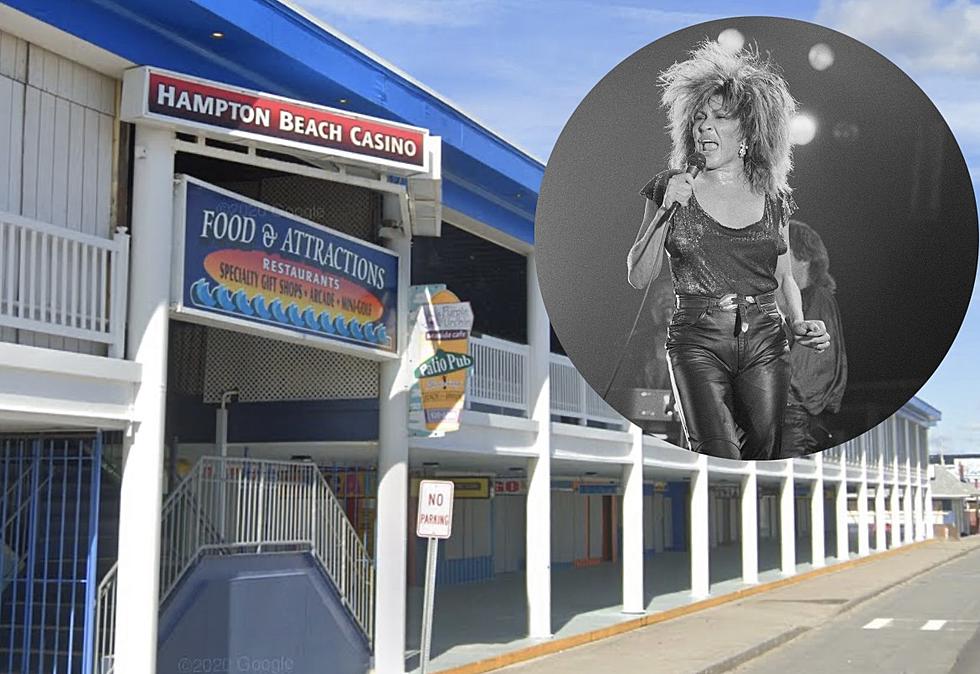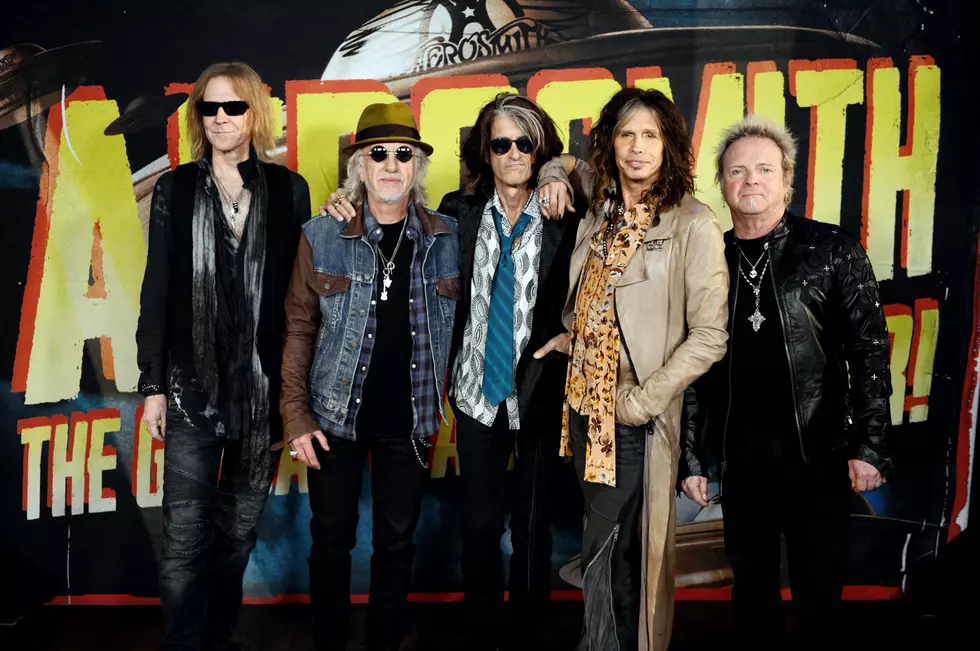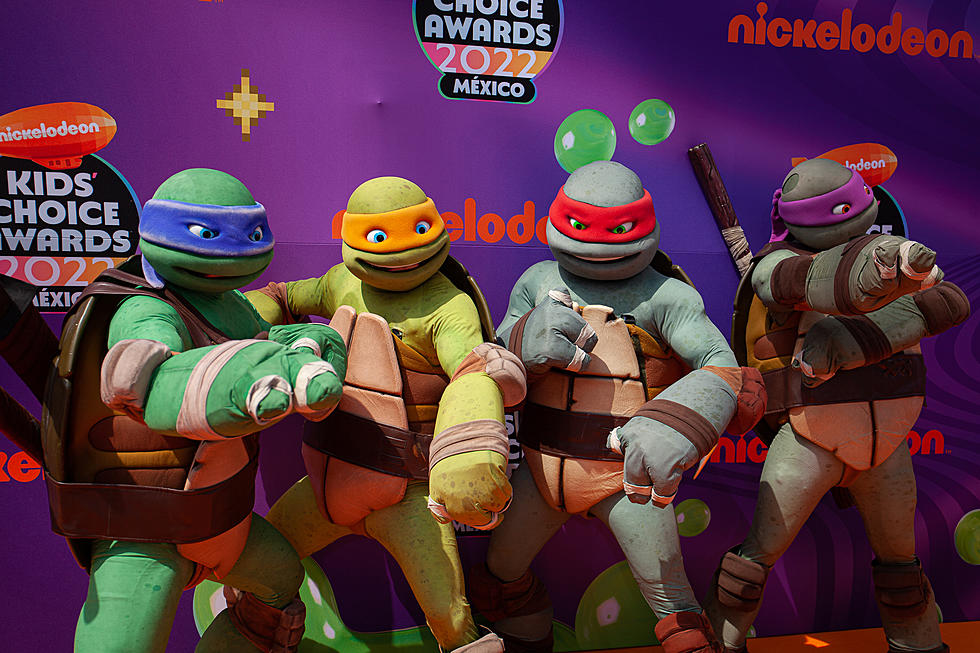
When Van Halen and Sammy Hagar Reunited for ‘Best of Both Worlds’
They called the set The Best of Both Worlds, but it heralded the worst of times for Van Halen. Before their successful reunion with David Lee Roth there would be another, less celebrated try at working with Sammy Hagar – one that produced three new songs for a two-disc hits compilation, along with a lot of heartache.
Released on July 20, 2004, The Best of Both Worlds was meant to promote a series of reunion shows with Hagar, though in practice what these sessions produced was a clear (though unheeded) sign of just how ill-fated this entire idea was.
The three contemporary tracks – "It's About Time," "Up for Breakfast" and "Learning to See" – were stacked in a row after the set-opening "Eruption," followed by a jolting mixture of 16 Roth-era studio tracks with 14 from Hagar's subsequent stint in Van Halen, and then three more concert recordings from 1993's Hagar-sung Live: Right Here, Right Now. Conspicuously missing was any mention, in the track listing or in the liner notes, of Van Halen's failed late '90s experiment with Gary Cherone.
The message seemed to be one of unity with Hagar, at the expense of the band's other eras. Based on recent commercial success alone, that made sense.
After all, over the course of Hagar's original 1985-96 tenure, Van Halen not only notched four consecutive chart-topping albums, they also scored eight Top 40 hits – besting the Roth-led group in both categories. They also placed a whopping nine songs atop Billboard's Mainstream Rock chart along the way. Roth may have ultimately moved more albums, but the bulk of those sales happened long after he'd departed. Hagar, meanwhile, helped Van Halen sell some two million copies of the Live: Right Here, Right Now video, too.
Alex Van Halen, for one, had put all of that into perspective. "We've matured," the drummer told USA Today in 2004. "It's a bad word that I don't allow in my household, but there's truth to it. The creative tension is still there, which is great. As for other stuff, I'll speak for myself. We made a mistake. The whole thing unraveled. We were buddies for 11 years, and all of a sudden it stopped. We were rash, things blew apart very fast and uncontrollably, and it ain't going to happen again."
The process leading to The Best of Both Worlds, however, hadn't been anywhere near that clear cut.
Listen to Van Halen Perform 'Learning to See'
Van Halen approached Roth, bassist Michael Anthony has said, but couldn't work out the details. Hagar made a fortuitous call to Alex around the same time, and all of sudden new music was in the works – only it was before Anthony himself had worked out his own deal, which ultimately included a diminished role in the band he co-founded. By then, the window for a tour was closing. Anthony ended up adding background vocals, but did not play bass on the finished tracks.
"The time that it was taking in the studio to do these three songs," Anthony said in 2006, "it would have taken us a couple of years to do an entire album. And, once it started to get put together [Van Halen manager] Irving Azoff really pushed it, speeded us along to get us out there and so it just turned out to be, 'Well, let's just do these three songs.'"
Already, there were fissures in the Van Halen facade. But they went unnoticed, likely because the sessions meant so much to Eddie Van Halen. His initial demos had come from a cathartic place, after a very difficult period. The guitarist had faced hip replacement, a divorce and cancer in the run up to Best of Both Worlds. He turned, brother Alex said, to the guitar for relief, and for inspiration.
"Maybe some of it shouldn't have been recorded, but it was a good creative outlet," Alex told USA Today. "It was therapeutic for what Ed was going through with his health. In times of doubt and when you're depressed, you tend to go to what gives you comfort, and that's music."
Hagar, for his part, was thrilled to be back – in particular, he said, because Eddie had been so busy in the interim. "There is enough music for 100 years in that studio laying on the floor," he said in Ian Christie's Everybody Wants Some: The Van Halen Saga.
And so, whatever stumbles came early on were quickly forgotten in the warm glow of reunion. "The chemistry between the four of us is very, very special," Hagar told the Sun-Sentinel in 2004. "That's a great thing to have it still waiting for you. These songs came out as pure, spontaneous inspiration."
All three tracks debuted during a June 2004 Westwood One special, which aired on 120 stations and featured the band's first radio interview in some eight years. Best of Both Worlds – which, even with its flawed non-sequential track arrangement, was a vast improvement on an earlier single-disc set – subsequently debuted at No. 3 on the Billboard chart.
Listen to Van Halen Perform 'It's About Time'
Van Hagar, it seemed, was back. "We're in this for the long haul, you know," Alex told the Baltimore Sun back then. "Words can't describe what it's like to make music together, and there's a special chemistry that happens between the four of us."
Even with most of a decade gone since Van Halen's ugly split with Hagar, there was no way – as he sings in "It's About Time" – to "turn your clock back." Old animosities remained, and new arguments were added, over the course of a scheduled 80-stop tour that followed. Out on the road, there was nothing to distract Van Halen from its latent problems. By the time that series of dates concluded, the perceived promise of Best of Both Worlds had vanished.
Both "It's About Time" and "Up for Breakfast" were released as singles, though neither charted on the Billboard Top 100. When the tour concluded, in fact, so did Van Halen's relationship with Hagar – though Christie reports that Alex hadn't given up on the idea a full-length studio project late into 2004. Hagar, however, was through. Even as Eddie reportedly went back to work on demos, a frustrated Hagar moved to Cabo San Lucas and began focusing on his solo career, managing a local cantina and growing his burgeoning liquor empire.
Once seen as a new beginning, this best-of compilation instead signaled the breaking apart of Van Halen's worlds. As such, so many of the band's comments from that time now drip with bitter irony – and none perhaps more than these, from Hagar's talk with the Minneapolis-St. Paul Star Tribune: “Ed and Al started playing me some music they had been working on, and it was just extremely inspiring. We said, ‘Here’s what we’re gonna do: We’re going to pretend like it never happened. We’re gonna rise above it.’”
Van Halen, of course, eventually reunited with Roth, first for a tour in 2007, followed by the 2012 album A Different Kind of Truth. By then Anthony had been replaced too, by Eddie Van Halen's son, Wolfgang. Hagar and Anthony subsequently formed their own band, Chickenfoot.
Bad feelings remained for years. "We tried to make a record," Hagar recalled in 2010, "but, y'know, it just was taking so long we only got three songs done – and not 'cause of me, I'll tell ya straight up.
"If anyone ever says anything like that I was the problem on that record, they're crazy," he added. "I had my stuff totally together. I went in, I knocked my stuff out, and then Eddie would take months to do a guitar solo or something. It was just way too drawn out. I can't work like that."
Eddie Van Halen Year by Year: 1977-2017 Photos
Think You Know Van Halen?
More From WSHK-WSAK 102.1 & 105.3 The Shark










